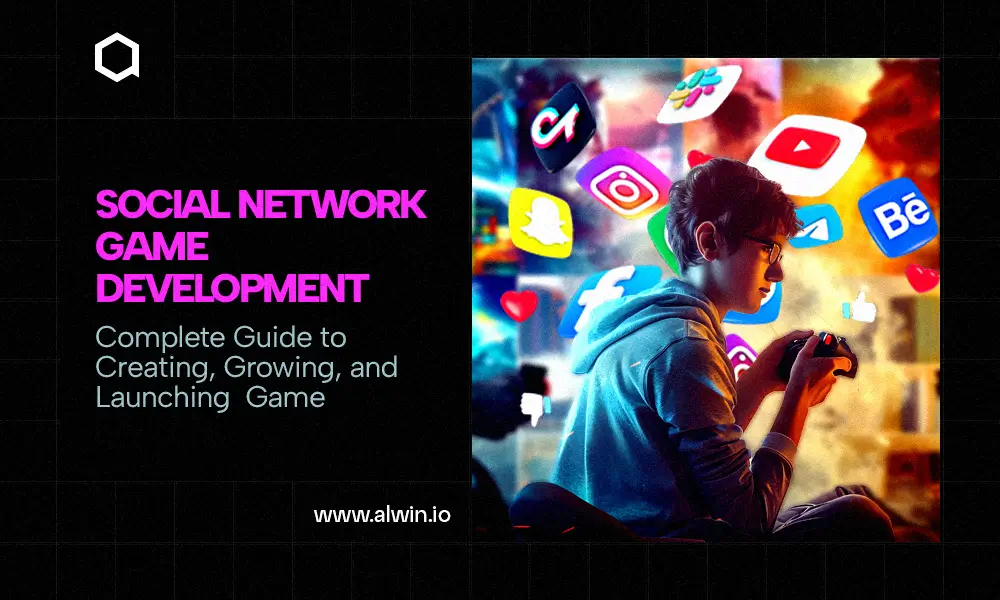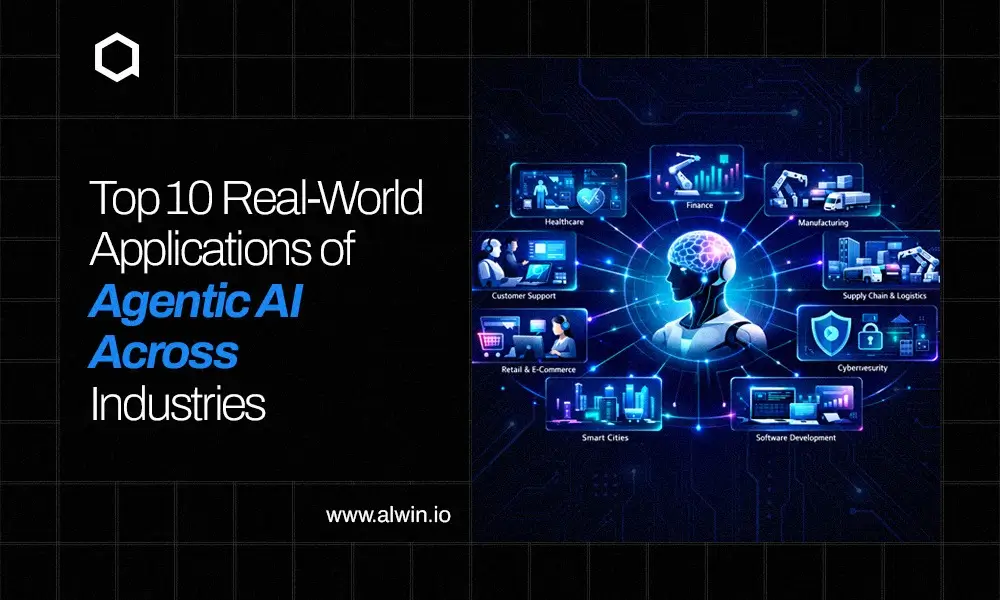If you want to create a game that does something more than entertainment, a game that builds community, facilitates interaction, and retains players, social network game development could be the solution. Players these days anticipate something more than just Great Gameplay. They likewise desire to work with others, share successes, complete, and collaborate, all within a virtual setting that is social and fulfilling.
Social network games combine game mechanics with social interaction, making them highly effective for building user engagement, brand loyalty, and monetization. Whether developed for casual players, fans of a specific franchise, or members of a niche online community, a well-crafted social network game can significantly improve user retention and reach.
In this blog, we'll guide you through the entire process of developing and launching the platform. You'll also learn about the key benefits of playing social network games.
Whether you're starting a business, a game company, or a startup aiming to create gamified social platforms, this guide will help you bring your vision to life.
The market overview
The global social gaming market is seeing substantial growth due to increasing mobile gaming adoption and social media integration. Projections estimate the market will reach USD 56.44 billion by 2033, with a compound annual growth rate (CAGR) of 12.2% from 2025 to 2033, according to Global Growth Insights. This growth is supported by rising smartphone use, better internet access, and a growing demand for interactive gameplay.
What is social network game development?
Social network game development is the process of creating games within social platforms. These games allow players to connect, compete, and collaborate with friends. The primary goal is to make gameplay more interactive by encouraging social interaction.
They often include features such as friend invites, leaderboards, in-game messaging, and achievement sharing. These games are highly engaging because they blend entertainment with a sense of community. It's an effective way to build a loyal user base and strengthen long-term engagement on the platform.
Why choose social network game development?
Choosing social network game development is a smart move because it creates games that are not only fun to play but also highly engaging and shareable. These games tap into the power of community by allowing players to connect with friends, compete on leaderboards, and share their progress. This kind of built-in social interaction helps attract new users, improve retention, and increase the chances of your game becoming popular.
The key features of using the social network game
Built-in Social Interaction - These games connect players through chats, friend lists, and feeds, making gameplay more engaging and community-driven.
Share and Invite Features - Players can easily share progress or invite friends, helping your game grow organically through social connections.
Public Achievements and Leaderboards - Displaying scores and achievements sparks friendly competition and motivates players to stay active.
Multi-Device Compatibility - Accessible on web, mobile, and even messaging apps, these games let users play anytime, anywhere.
Regular Content Updates - New events and frequent updates keep the game exciting and give users fresh reasons to return.
In-Game Rewards and Monetization - Reward systems and optional purchases drive engagement while supporting smooth monetization.
The benefits of using social networks for Game Development
Greater Reach
Reach out to millions of engaged users already on social sites, simplifying discovery and access.
Affordable User Acquisition
Acquire new players naturally through invites and shares, cutting the necessity for expensive advertising.
Improved Player Retention
Social connections and friendly rivalry bring users back and retain them longer.
Simplified Feedback and Improvement
Rapid player feedback via comments and reviews allows you to enhance the game in real time.
Players group themselves, team up, or guild, making play a communal experience.
Future Trends in Social Network Game Development
Web3 and Digital Ownership - Social games are starting to include blockchain-based items, tokens, and features that let players truly own in-game assets.
AI-Powered Game Experiences - AI is being used to personalize gameplay, adapt challenges, and recommend content based on how each player interacts.
Immersive AR & VR Enhancements - Augmented and virtual reality are adding new layers of immersion, especially in mobile-based social gaming experiences.
Instant Mini-Games on Social Apps - Quick, casual games built into apps like TikTok and Messenger are gaining traction for their easy access and viral appeal.
Rise of Decentralized Gaming Platforms - Developers are moving toward independent platforms, reducing reliance on big tech and gaining more creative freedom.
Step-by-Step Guide to Creating, Growing, and Launching Your Game:
1. Define Your Game Idea and Audience
Start by deciding what kind of social game you want to build. Will it be casual, competitive, or co-operative? Thinking about a clear game idea helps guide every step that follows.
2. Create a Game Design Document (GDD)
Your GDD is like the blueprint for your game. It should include gameplay mechanics, goals, characters, social features (like leaderboards or chat), and how players will interact.
3. Research the Market
Check out other popular social games. What features do they offer? What makes them successful? This step helps you find opportunities to make your game stand out and understand what your target players are looking for.
4. Choose the Right Technology
Pick the game engine and programming languages that suit your needs. Unity and Unreal are popular for 2D/3D games, while GDevelop and Godot are great for simpler projects. Also consider platform compatibility, Android, iOS, web, or all of them.
5. Build a Prototype
Start with a basic version of your game, a playable demo with core features. This doesn’t need full visuals yet. The goal is to test the main idea and mechanics, gather feedback, and refine the gameplay before moving into full development.
6. Design Visuals, Sounds, and UI
Now it’s time to make your game visually appealing. Make sure the user interface (UI) is simple and user-friendly, especially for mobile and social platforms.
7. Develop Core Features and Backend
Build the full version of your game based on the prototype. Add all gameplay features, social elements (like friend invites or in-game messaging), and backend support for storing data, handling logins, or syncing multiplayer actions.
8. Test the Game Thoroughly
Before launch, test your game for bugs, performance issues, and user experience. Use both manual testing and automated tools to ensure it works smoothly across all devices and platforms. Fix anything that might hurt the player experience.
9. Launch and Promote Your Game
Once your game is polished, release it on platforms like the App Store, Google Play, or web. Optimize your store listing with screenshots, descriptions, and keywords.
10. Monitor, Update, and Grow
After launch, listen to player feedback, fix bugs quickly, and add new content regularly. Update features, launch events, and reward players to keep the community active and growing.
Why Choose Wealwin for Social Network Game Development?
WeAlwin specializes in game development, with a focus on creating fun, interactive games where players can connect with friends, share progress, and feel a genuine sense of community. Whether it’s through friendly competition or collaborative play, we design gameplay that keeps users engaged and returning.
Our team has a deep understanding of social player behavior. We use this insight to develop intuitive features like friend invites, group challenges, and real-time chat. We also build adaptable systems for in-game rewards and fair monetization, enabling growth in both player base and revenue without compromising user enjoyment.
We work closely with you throughout the entire process, respond quickly to input, and maintain clear communication at every stage. With our agile methods and full-cycle support, you’ll have a dependable partner to help bring your game idea to life as a successful social platform.



